Yala National Park Guide
Get answers to the most frequently asked questions about Yala National Park. From safari tips to travel information, find all you need to know before you go.
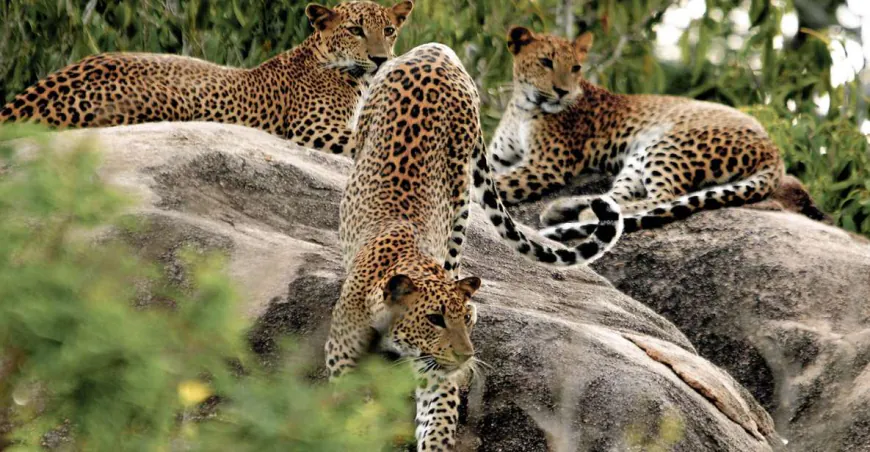
Table of Contents
- Wildlife Paradise Unveiled
- FAQ Structure Overview
- Yala Park Overview
- Planning Your Trip
- Safari Options and Tours
- Lodging and Amenities
- Park Entry and Permits
- Wildlife and Conservation Highlights
- Packing and Safety Essentials
- Yala: Nature's Wonderland Awaits
- Frequently Asked Questions
- Connect With Us
-
Wildlife Paradise Unveiled
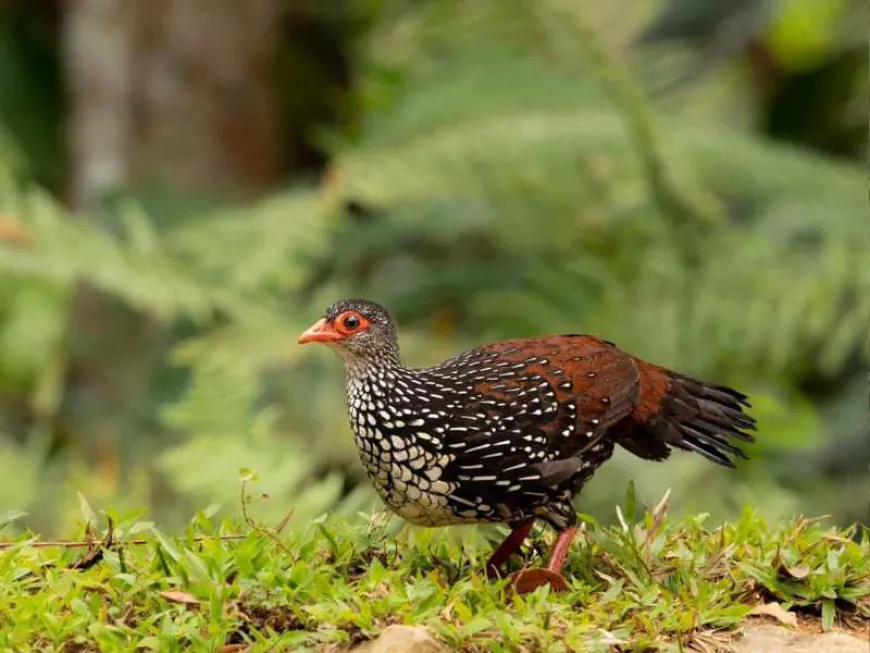
Yala National Park, Sri Lanka's most visited national park, is renowned for its diverse wildlife, including one of the highest densities of leopards in the world. This spectacular wilderness is home to 44 varieties of mammals, over 215 bird species, and offers visitors a range of exciting activities from private safaris to exploring ancient temple relics.
Yala National Park, located in the southeastern region of Sri Lanka, is a vast wilderness spanning approximately 130,000 hectares. Established as a wildlife sanctuary in 1900 and designated as a national park in 1938, Yala has a rich history, including its past as a hunting ground for the elite during British colonial rule.
The park is divided into five blocks, with two currently open to the public. It encompasses a diverse range of ecosystems, including light forests, scrubs, grasslands, tanks (man-made reservoirs), and lagoons. This variety of habitats contributes to the park's remarkable biodiversity.
Yala's landscape is characterized by a flat and mildly undulating plain that extends to the coast. The elevation ranges from 30 meters near the coast to 100-125 meters in the interior. The park experiences a dry semi-arid climate, with annual rainfall ranging between 500-775 millimeters, primarily received during the northeast monsoon.
The park's unique location bordering the Indian Ocean adds to its appeal, offering visitors breathtaking coastal views alongside its wildlife attractions. Yala's proximity to the ocean also influences its ecosystems, with mangrove vegetation found in areas like the Buthuwa lagoon.
Yala National Park is not only a haven for wildlife but also holds historical and cultural significance. The park area contains evidence of ancient civilizations, including two important Buddhist pilgrim sites: Sithulpahuwa and Magul Vihara. These archaeological sites provide a glimpse into the region's rich cultural heritage, with some settlements dating back over 2,000 years.
The park's diverse ecosystems support a wide array of flora and fauna. Yala is particularly famous for its high density of leopards, making it one of the best places in the world to spot these elusive big cats. The park is also home to significant populations of Sri Lankan elephants, sloth bears, and numerous bird species, including six endemic to Sri Lanka.
Visitors to Yala can experience the park through safari tours, which typically operate twice daily - early morning and late afternoon. These tours offer opportunities to observe wildlife in their natural habitats and learn about the park's complex ecosystems from knowledgeable guides.
-
FAQ Structure Overview
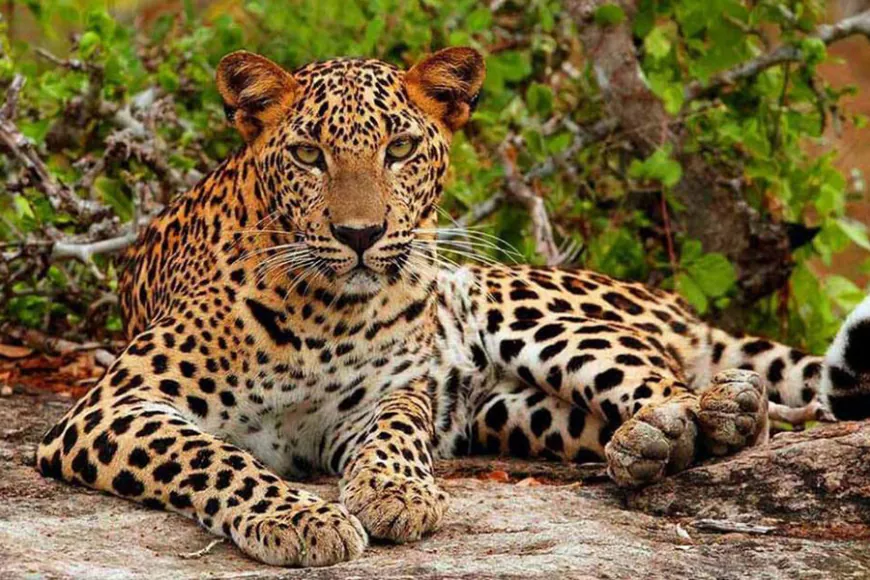
Addressing common queries efficiently is crucial for providing excellent customer service and maintaining positive relationships with customers. Here are some key points about the importance of addressing common queries and structuring FAQs effectively:
- Saves time for both customers and support staff by providing quick access to frequently requested information.
- Builds trust and credibility by demonstrating responsiveness to customer needs.
- Reduces frustration and improves customer satisfaction by resolving issues promptly.
- Allows support teams to focus on more complex inquiries by handling routine questions through FAQs.
- Provides consistent messaging across customer touchpoints.
Key elements of an effective FAQ structure:
- Organize questions into logical categories for easy navigation.
- Use clear, concise language that matches how customers phrase their queries.
- Include a search function to help users quickly find relevant information.
- Regularly update FAQs based on new common questions that arise.
- Provide links to more detailed resources when appropriate.
- Use a mix of text, images, and videos to explain concepts clearly.
- Include a way for users to contact support if their question isn't answered.
- Monitor FAQ usage to identify areas for improvement.
By addressing common queries efficiently through well-structured FAQs, organizations can improve customer experience, reduce support costs, and free up staff to handle more complex issues. Regular review and updates ensure FAQs remain relevant and continue to meet customer needs over time.
-
Yala Park Overview
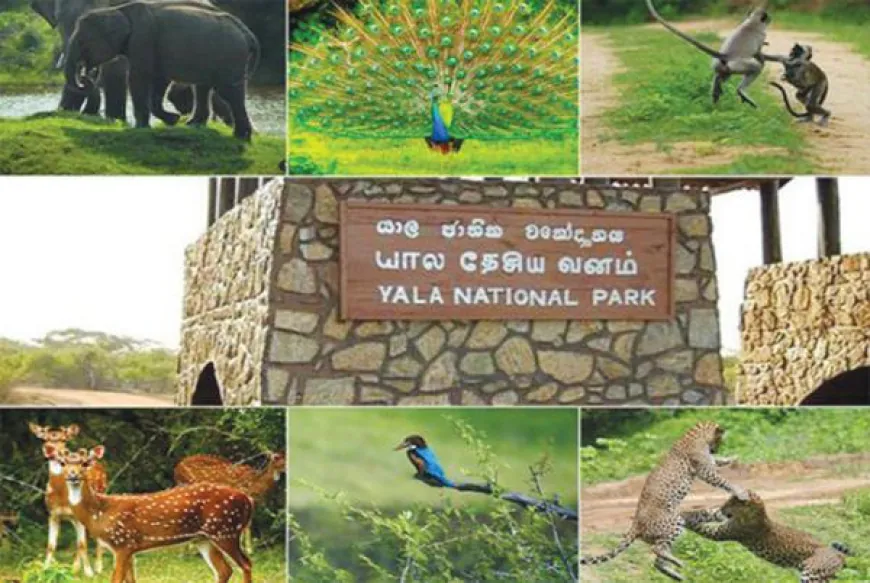
Yala National Park is one of Sri Lanka's most prominent wildlife sanctuaries, offering visitors a chance to experience diverse ecosystems and abundant wildlife. Here are key details about the park and its location:
- Yala National Park is the most visited and second largest national park in Sri Lanka.
- It covers an area of 979 square kilometers (378 sq mi).
- The park consists of five blocks, with two currently open to the public.
- It combines a strict nature reserve with a national park, creating a vast protected area.
Location:
- Situated in the southeastern region of Sri Lanka.
- Borders the Indian Ocean.
- Spans across both Southern and Uva Provinces.
- Located approximately 300 kilometers (190 mi) from Colombo.
- Accessible via several routes, with the shortest being 270 kilometers via Ratnapura and Tissamaharama.
Ecosystems and landscape:
- Features a variety of ecosystems including moist monsoon forests, dry monsoon forests, semi-deciduous forests, thorn forests, grasslands, freshwater and marine wetlands, and sandy beaches.
- Characterized by a flat and mildly undulating plain that runs to the coast.
- Elevation ranges from 30 meters (98 ft) near the coast to 100-125 meters (330-410 ft) in the interior.
- Contains several ancient man-made tanks (reservoirs) such as Maha Seelawawa and Buthawa Tank.
Climate:
- Located in a dry semi-arid climatic region.
- Receives rainfall mainly during the northeast monsoon.
- Annual rainfall ranges between 500-775 millimeters (20-30.5 in).
- Mean temperature ranges from 26.4°C (79.5°F) in January to 30°C (86°F) in April.
Historical significance:
- Designated as a wildlife sanctuary in 1900.
- Became one of Sri Lanka's first two national parks in 1938, along with Wilpattu.
- Previously used as a hunting ground for the elite under British rule.
- Contains important Buddhist pilgrim sites such as Sithulpawwa and Magul Vihara.
-
Planning Your Trip
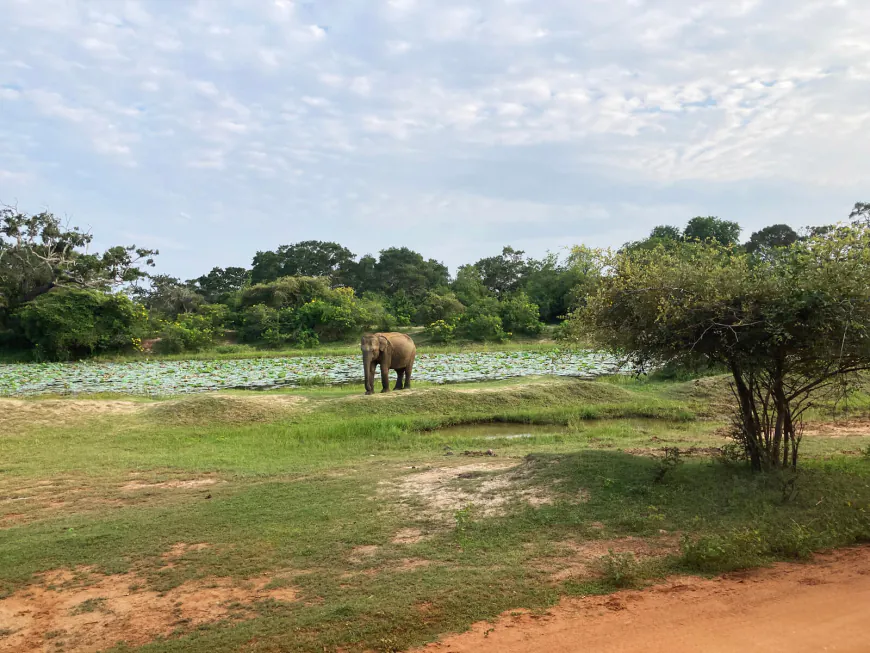
Yala National Park is accessible through various transportation options, and the best time to visit depends on your wildlife viewing preferences and weather considerations. Here's essential information to help plan your visit:
How to Get There Details From Colombo Approximately 6 hours drive (260 km) From Galle About 3 hours drive (190 km) Nearest city Kataragama (30 km, 40 minutes drive) Nearest airport Mattala Rajapaksa International Airport Entry points Gate 1: Katagamuwa, Gate 2: Palatupana There are several ways to reach Yala National Park:
- By car: Most visitors drive from major cities like Colombo or Galle. The journey from Colombo takes about 6 hours, while from Galle it's approximately 3 hours.
- By tour: Many operators offer tours from various locations in Sri Lanka, including Colombo, Ella, Galle, and Tissamaharama.
- By public transport: While possible, it's less convenient and not recommended for most visitors.
Best Times to Visit:
- Peak season: December to April
- Dry season: February to June (best for wildlife spotting)
- Peak leopard season: February and March
- Park closure: Typically September for maintenance (check for current status)
The best time to visit Yala National Park depends on your priorities:
- Wildlife viewing: The dry season (February to June) is ideal as animals gather around water sources, making them easier to spot.
- Leopard sightings: February and March offer the highest chances of leopard sightings.
- Avoiding crowds: Visit outside the peak season (December to April) for a quieter experience.
- Weather considerations: The park experiences a dry semi-arid climate with an average temperature of 26.4°C (79.5°F).
- Bird watching: The park hosts over 215 bird species, with migratory birds present from November to April.
When planning your visit, keep in mind that the park is open from 6 AM to 6 PM daily. Safari tours typically operate twice daily, at 6 AM and 2 PM, each lasting about 4 hours. It's advisable to book your safari in advance, especially during peak season, to ensure availability.
-
Safari Options and Tours
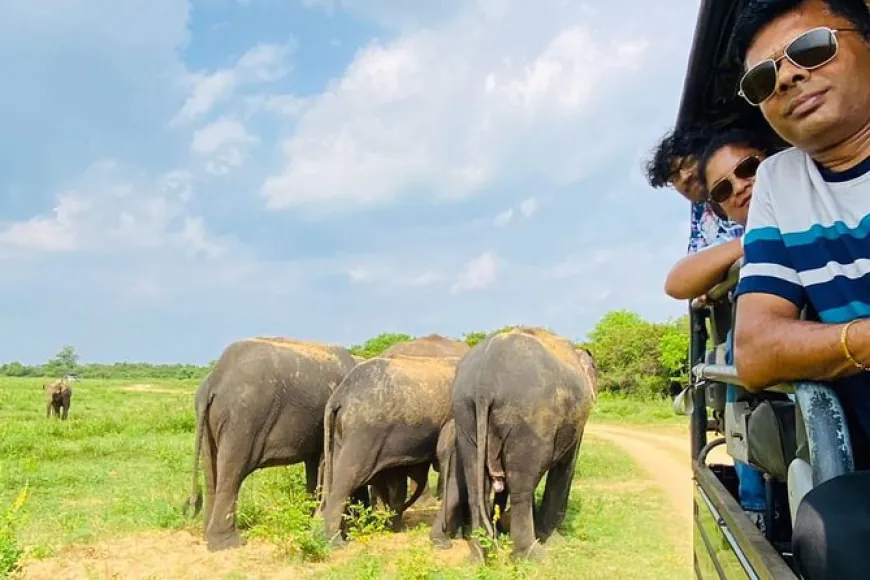
Yala National Park offers a variety of safari options to suit different preferences and schedules. Here's an overview of the available safari options and the benefits of guided tours:
Safari Options:
Option Details Half-Day Morning Safari Typically starts around 5:00-5:30 AM
Lasts about 3-4 hours
Best time for wildlife spotting as animals are more active
Half-Day Afternoon Safari Usually begins around 2:00-3:00 PM
Lasts about 3-4 hours
Generally quieter with fewer vehicles
Full-Day Safari Starts early morning and continues until evening
Provides more time for wildlife observation
Includes a lunch break
Overnight Safari Includes accommodation within or near the park
Offers evening and early morning game drives
Provides a more immersive experience
Private Safaris Customizable itineraries
Dedicated guide and vehicle
More flexibility in timing and routes
Are guided tours worth it?
- Expert Knowledge: Guides are well-versed in local wildlife and ecosystems, enhancing the educational aspect of your safari.
- Improved Wildlife Spotting: Experienced guides know the best locations and can identify animals more easily.
- Safety: Guides ensure adherence to park rules and safety protocols.
- Convenience: Tour operators handle logistics, including transportation and permits.
- Insider Information: Guides often have up-to-date information on recent wildlife sightings.
- Language Support: Many guides speak multiple languages, facilitating communication for international visitors.
- Cultural Insights: Guides can provide context on the park's history and cultural significance.
When choosing a safari option, consider factors such as your schedule, budget, and wildlife viewing priorities. While self-drive options exist, guided tours are generally recommended for their added value in terms of knowledge, safety, and convenience. Booking with reputable operators can significantly enhance your Yala National Park experience.
-
Lodging and Amenities
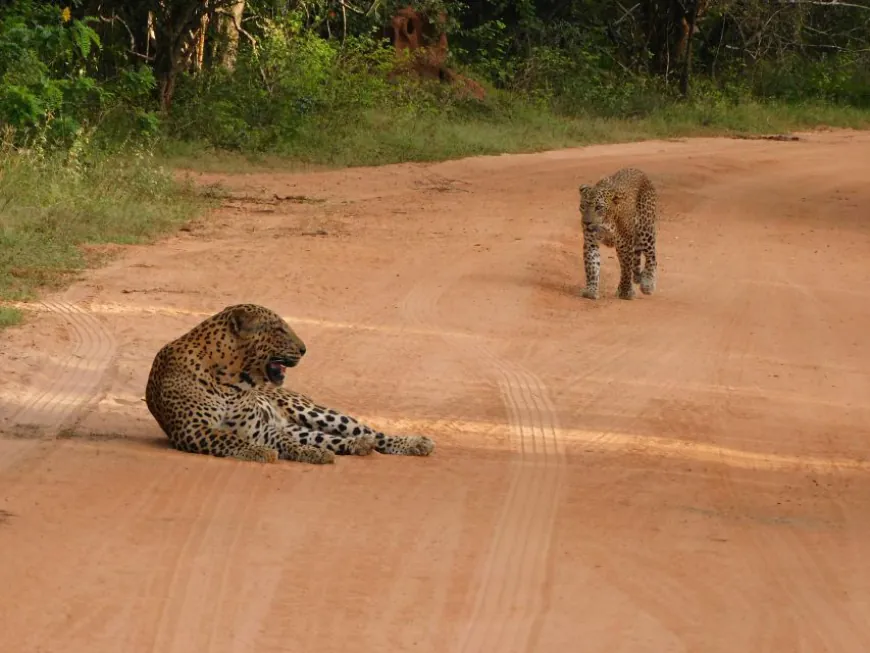
Yala National Park offers a range of accommodation options to suit various preferences and budgets. Here's an overview of some top-rated places to stay near the park, along with information about dining options:
Accommodation:
Accommodation Rating Price Range Notable Features Uga Chena Huts 5.0 Luxury Private plunge pools, spa center, 5 minutes from park Wild Coast Tented Lodge 5.0 Luxury Beachfront location, unique "cocoon" tents Cinnamon Wild Yala 4.5 Mid-range to Luxury Observation deck, 5-minute drive from park Jetwing Yala 4.5 Mid-range to Luxury Outdoor pool, spread across 38 acres Thaulle Ayurveda Resort 4.0 Mid-range Lakeside location, Ayurvedic treatments - Uga Chena Huts is a highly-rated luxury option located just 5 minutes from Yala National Park. It features free WiFi, a spa center, and an outdoor pool, offering fine views of the wilderness.
- Wild Coast Tented Lodge is another 5-star option situated where the jungle meets a pristine beach. Its unique design uses arched fabric structures that blend seamlessly with the surrounding landscape.
- For those seeking a mid-range option, Cinnamon Wild Yala offers comfortable accommodations with an observation deck providing a 360° view of the forest and the Indian Ocean. It's only a 5-minute drive from the famous Yala National Park.
- Jetwing Yala is spread across 38 acres of land and features an outdoor pool and luxurious rooms. It's known for its commitment to environmental sustainability.
Dining Options:
-
While there are limited dining facilities within Yala National Park itself, most accommodations near the park offer dining options:
- In-house Restaurants: Most hotels and lodges near Yala have their own restaurants serving a variety of local and international cuisines.
- Packed Meals: Many safari operators provide packed meals or snacks for full-day safaris.
- Picnic Areas: Some areas within the park are designated for picnics, allowing visitors to bring their own food.
- Local Eateries: The nearby town of Tissamaharama offers local dining options.
-
It's important to note that there are no restaurants or shops inside the park itself. Visitors are advised to carry sufficient water and snacks, especially for longer safaris. Most guided tours include refreshments as part of their package.
For the best experience, it's recommended to choose accommodation that aligns with your budget and desired amenities, keeping in mind its proximity to the park entrance for convenient safari access.
-
Park Entry and Permits
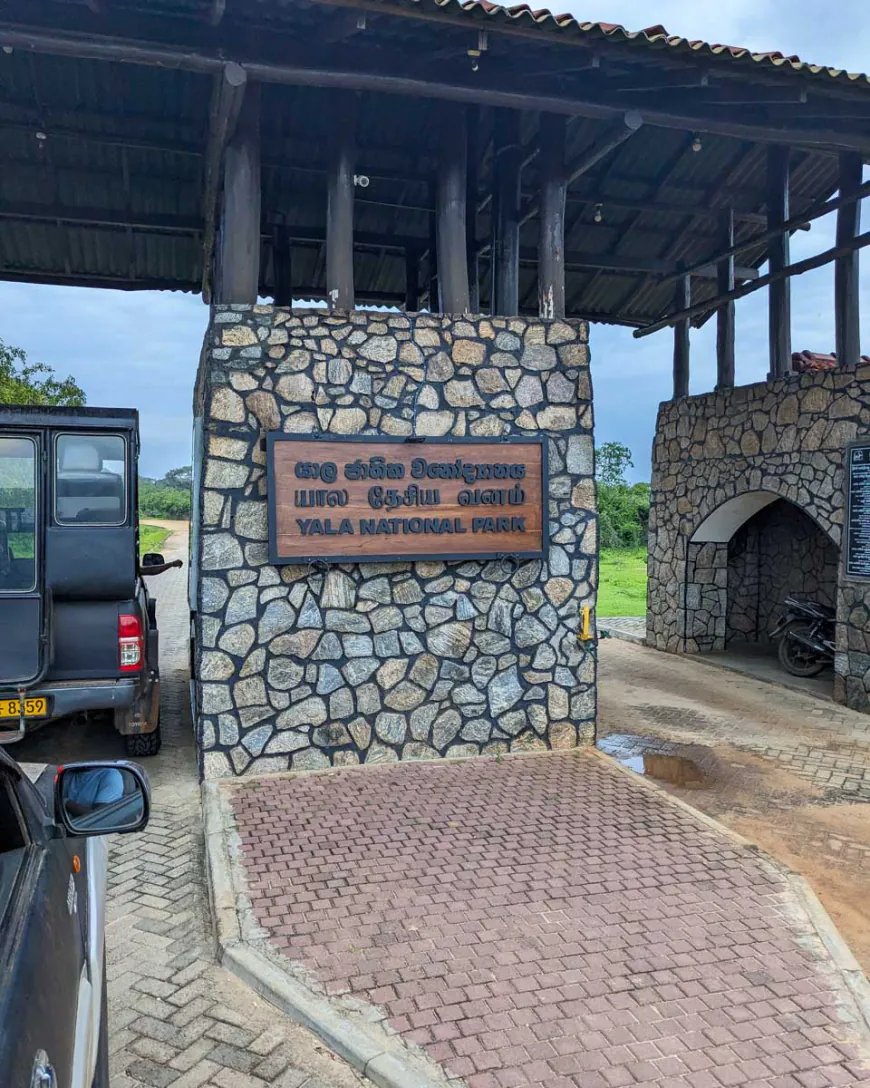
Yala National Park has a tiered fee structure for entry, with different rates for foreign and local visitors. Here's a breakdown of the entry fees and permit requirements:
Visitor Category Peak Season Off-Peak Season Foreign Adult (12+) $25 $20 Foreign Child (6-12) $15 $10 SAARC Country Adult (12+) $20 $15 SAARC Country Child (6-12) $10 $8 Local Adult (12+) Rs. 100 Rs. 100 Local Child (6-12) Rs. 50 Rs. 50 -
These entry fees are subject to additional charges:
- 15% VAT
- Service charges
- Other applicable taxes
-
For overnight stays in the National Park, the entry fee is doubled.
Regarding permits and additional fees:
-
Visitors must purchase an entry ticket before entering the park. These are issued by the Wildlife and Conservation Department at the entrance gate.
-
A separate jeep hire fee is required, which is typically around $40 for a half-day safari and $75 for a full-day safari. This cost can be shared among up to 6 people per jeep.
-
For Block 1 at Palatupana, a half-day tour costs approximately $55, while a full-day tour is about $85.
-
For Block 1 at Katagamuwa and Blocks 4 and 5 at Galge, half-day tours are around $60, and full-day tours cost about $90.
-
It's important to note that these fees are subject to change, and it's advisable to check the most current rates before planning your visit. Some tour operators may include the entry fees and permits in their package prices, so be sure to clarify what's included when booking a safari.
-
Remember that the entrance ticket counter can get busy, especially during peak season. Many safari operators offer assistance in purchasing tickets to streamline the process. It's recommended to arrive early or book in advance to avoid delays in entering the park.
-
-
Wildlife and Conservation Highlights
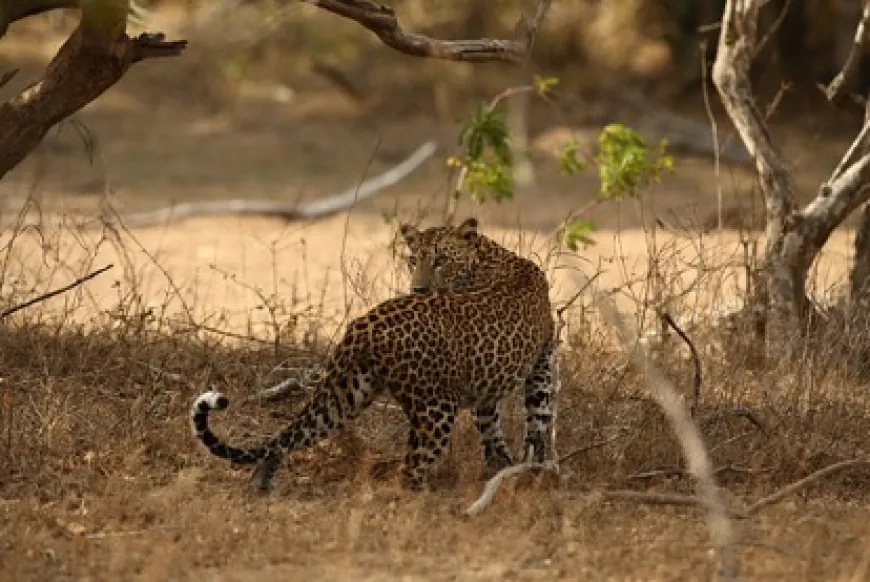
Yala National Park is renowned for its rich biodiversity and conservation efforts. Here's an overview of the wildlife you can expect to see and the ongoing conservation initiatives:
Wildlife in Yala National Park:
-
Mammals: 44 species recorded, including:
- Sri Lankan elephant
- Sri Lankan leopard (highest density in the world)
- Sri Lankan sloth bear
- Wild water buffalo
- Toque macaque
- Golden palm civet
- Red slender loris
- Fishing cat
-
Birds: 215 species, including 6 endemic to Sri Lanka
- Notable species: pelicans, painted storks, spoonbills, herons, egrets, and little cormorants
-
Reptiles: 47 species, 6 of which are endemic
- Sea turtles: All five globally endangered species visit the park's coastal areas
- Crocodiles: Both mugger and saltwater crocodiles are present
- Other notable species: Sri Lankan krait, Boulenger's keelback, Sri Lankan flying snake
-
Amphibians: 18 species recorded
- Endemic species include Bufo atukoralei and Adenomus kelaartii
-
Fish: 21 freshwater species
- Endemic species include stone sucker and Esomus thermoicos
-
Invertebrates: Various species of crabs, prawns, and butterflies
Conservation Efforts:
-
Habitat Protection: The park is divided into strict nature reserves and protected areas to maintain ecological processes and life-sustaining systems
-
Genetic Diversity Management: Efforts to conserve all components of genetic diversity, including crop plants and farm animals
-
Sustainable Use: Promoting equitable sharing of benefits arising from wildlife resources and ecosystems
-
Species Conservation: Focus on conserving native and endemic species and their habitats to maintain overall species richness
-
Education and Research: Encouraging the development of biological repositories for conservation education and scientific purposes
-
Community Involvement: Engaging the private sector and local communities as partners in the wildlife conservation process
-
Anti-poaching Measures: Implementation of strict anti-poaching patrols and enforcement of wildlife protection laws
-
Ecosystem Management: Maintaining the park's diverse ecosystems, including moist monsoon forests, freshwater and marine wetlands
-
Monitoring Programs: Regular surveys and monitoring of wildlife populations, especially for key species like leopards and elephants
-
Sustainable Tourism: Implementing responsible tourism practices to minimize impact on wildlife and habitats while supporting conservation through revenue generation
These conservation efforts are crucial for safeguarding Yala's unique biodiversity and ensuring the park's ecological integrity for future generations. The Department of Wildlife Conservation (DWC) plays a pivotal role in implementing and overseeing these initiatives.
-
-
Packing and Safety Essentials
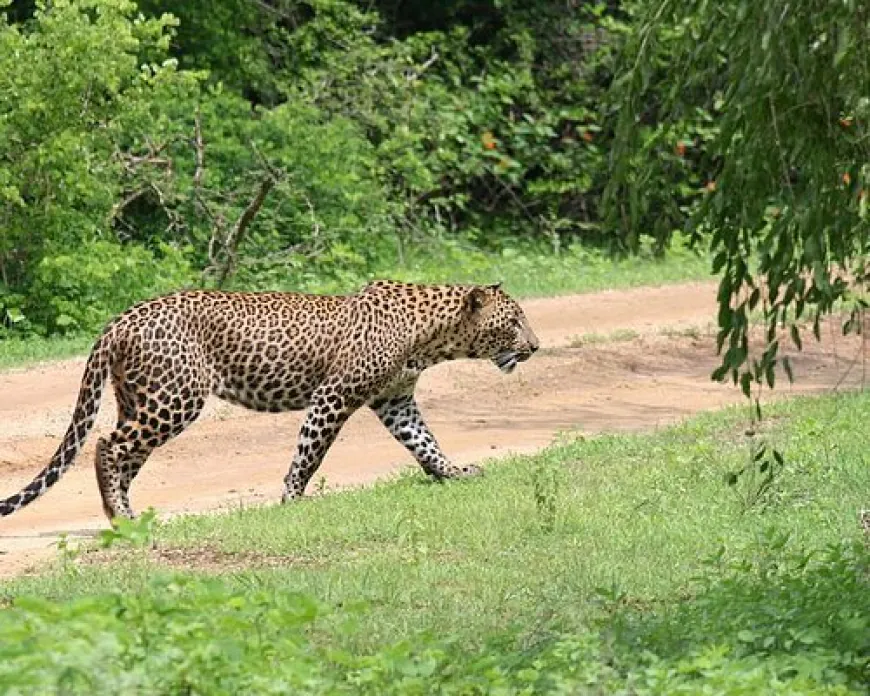
Yala National Park is renowned for its rich biodiversity and conservation efforts. Here's an overview of the wildlife you can expect to see and the ongoing conservation initiatives:
Wildlife in Yala National Park:
-
Mammals: 44 species recorded, including:
- Sri Lankan elephant
- Sri Lankan leopard (highest density in the world)
- Sri Lankan sloth bear
- Wild water buffalo
- Toque macaque
- Golden palm civet
- Red slender loris
- Fishing cat
-
Birds: 215 species, including 6 endemic to Sri Lanka
- Notable species: pelicans, painted storks, spoonbills, herons, egrets, and little cormorants
-
Reptiles: 47 species, 6 of which are endemic
- Sea turtles: All five globally endangered species visit the park's coastal areas
- Crocodiles: Both mugger and saltwater crocodiles are present
- Other notable species: Sri Lankan krait, Boulenger's keelback, Sri Lankan flying snake
-
Amphibians: 18 species recorded
- Endemic species include Bufo atukoralei and Adenomus kelaartii
-
Fish: 21 freshwater species
- Endemic species include stone sucker and Esomus thermoicos
-
Invertebrates: Various species of crabs, prawns, and butterflies
Conservation Efforts:
-
Habitat Protection: The park is divided into strict nature reserves and protected areas to maintain ecological processes and life-sustaining systems
-
Genetic Diversity Management: Efforts to conserve all components of genetic diversity, including crop plants and farm animals
-
Sustainable Use: Promoting equitable sharing of benefits arising from wildlife resources and ecosystems
-
Species Conservation: Focus on conserving native and endemic species and their habitats to maintain overall species richness
-
Education and Research: Encouraging the development of biological repositories for conservation education and scientific purposes
-
Community Involvement: Engaging the private sector and local communities as partners in the wildlife conservation process
-
Anti-poaching Measures: Implementation of strict anti-poaching patrols and enforcement of wildlife protection laws
-
Ecosystem Management: Maintaining the park's diverse ecosystems, including moist monsoon forests, freshwater and marine wetlands
-
Monitoring Programs: Regular surveys and monitoring of wildlife populations, especially for key species like leopards and elephants
-
Sustainable Tourism: Implementing responsible tourism practices to minimize impact on wildlife and habitats while supporting conservation through revenue generation
These conservation efforts are crucial for safeguarding Yala's unique biodiversity and ensuring the park's ecological integrity for future generations. The Department of Wildlife Conservation (DWC) plays a pivotal role in implementing and overseeing these initiatives.
-
-
Yala: Nature's Wonderland Awaits
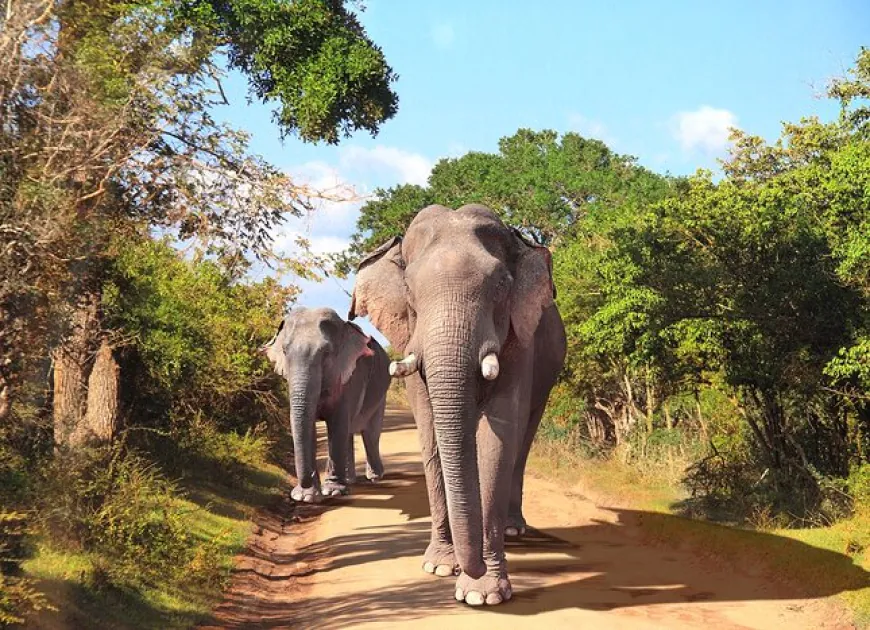
Yala National Park offers a unique wildlife experience in Sri Lanka, with diverse ecosystems and abundant wildlife. Here's a recap of key information and reasons to visit:
Key FAQs:
- Location: Southeastern Sri Lanka, approximately 300 km from Colombo
- Size: 979 square kilometers (378 sq mi)
- Wildlife: Home to 44 mammal species, 215 bird species, and one of the highest leopard densities in the world
- Best time to visit: February to June (dry season) for optimal wildlife viewing
- Entry fees: Vary based on visitor category, ranging from $20-$25 for foreign adults
- Safari options: Half-day, full-day, and overnight safaris available
Reasons to explore Yala:
- Unparalleled wildlife viewing opportunities, especially for leopards and elephants
- Diverse ecosystems including forests, grasslands, and coastal areas
- Rich cultural heritage with ancient Buddhist sites within the park
- Variety of accommodation options, from luxury lodges to mid-range hotels
- Professional guides to enhance your safari experience and wildlife knowledge
- Contribution to conservation efforts through responsible tourism
- Opportunity to see migratory birds between November and January
- Stunning landscapes and scenic beauty, including beaches bordering the Indian Ocean
- Chance to experience Sri Lanka's natural heritage and biodiversity
- Unforgettable adventure and memories to last a lifetime
Visiting Yala National Park offers a unique opportunity to witness Sri Lanka's incredible wildlife in their natural habitat. With proper planning and respect for park guidelines, your visit can be both thrilling and educational, contributing to the ongoing conservation of this remarkable ecosystem.
-
Frequently Asked Questions
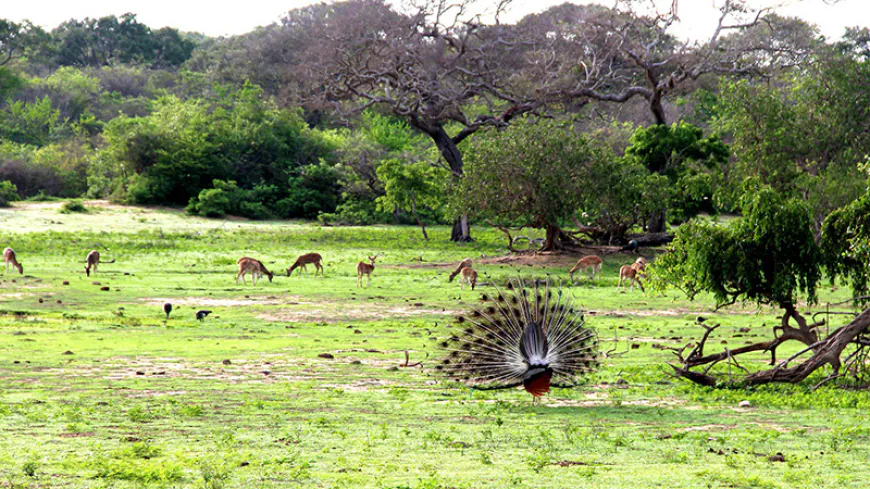
Here are some frequently asked questions (FAQs) about Yala National Park, addressing common queries visitors may have:
What is the best time to visit Yala National Park? The best time to visit is during the dry season from February to June, when wildlife is easier to spot around water sources. February and March are particularly good for leopard sightings.
How much does it cost to enter Yala National Park? Entry fees vary based on visitor category. Foreign adults pay $25 in peak season and $20 in off-peak season, while local adults pay Rs. 100 year-round. Additional fees apply for vehicle hire and guides.
What animals can I expect to see in Yala? Yala is home to 44 mammal species, including Sri Lankan elephants, leopards, sloth bears, and various deer species. The park also hosts 215 bird species and numerous reptiles.
Are guided tours necessary? While not mandatory, guided tours are highly recommended. Experienced guides can enhance wildlife spotting, provide valuable information, and ensure safety protocols are followed.
What should I wear on a Yala safari? Wear comfortable, lightweight clothing in neutral colors. Avoid bright colors that may disturb wildlife. Don't forget sun protection (hat, sunglasses, sunscreen) and closed-toe shoes.
How long do safaris typically last? Most safaris are either half-day (3-4 hours) or full-day (6-8 hours) tours. Morning safaris usually start around 5:30 AM, while afternoon safaris begin around 2:30 PM.
Is it safe to visit Yala National Park? Yes, it's generally safe when following park rules and guide instructions. Always stay in the vehicle during safaris and maintain a safe distance from wildlife.
What accommodation options are available near Yala? Accommodations range from luxury lodges like Uga Chena Huts and Wild Coast Tented Lodge to mid-range options like Cinnamon Wild Yala. Many offer convenient access to the park.
Can I drive my own vehicle in the park? Self-drive safaris are not recommended. It's best to book a tour with a registered operator who provides a vehicle and experienced driver/guide.
Is Yala National Park open year-round? The park is typically open year-round, but it usually closes in September for maintenance. It's advisable to check current status before planning your visit.
-
Connect With Us
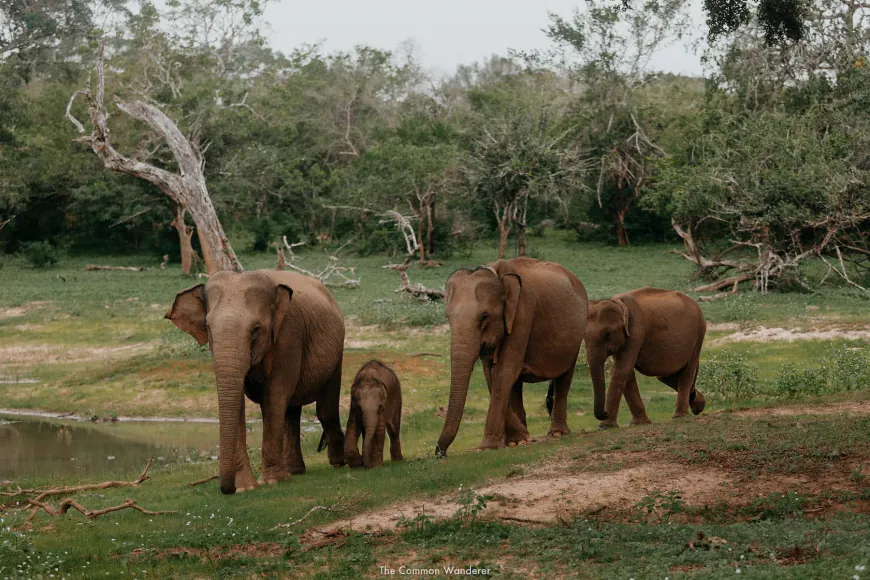
Here are some ways to stay connected and learn more about Yala National Park:
Contact us for more information:
- Email: [email protected]
- Phone: +94723456726
- Website: yalalk.com
Join our newsletter for the latest updates on Yala wildlife sightings, conservation efforts, and visitor tips.
Comment on our blog posts to share your Yala experiences or ask questions.
Share our articles on social media to help others discover the wonders of Yala National Park.
Follow us on social media for stunning wildlife photos and park news:
- Facebook: Yala National Park
- Instagram: @yala_national_park
- Twitter: @YalaPark
Book your Yala safari adventure through our website for exclusive offers and expert guidance.
Support Yala's conservation efforts by donating or participating in our volunteer programs.
Stay connected with Yala National Park to enhance your visit and contribute to the preservation of this unique ecosystem. We look forward to hearing from you and welcoming you to Sri Lanka's wildlife paradise!
What's Your Reaction?









































